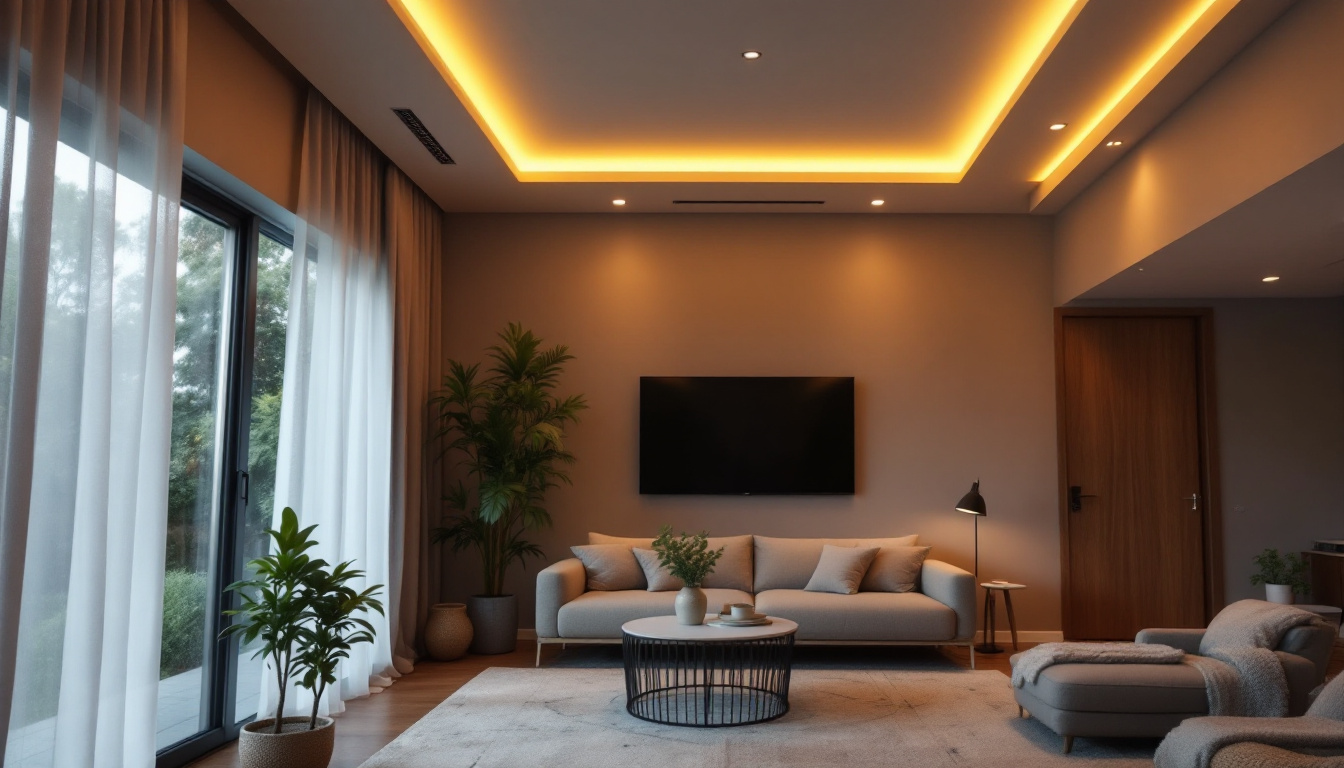
In the world of lighting design and installation, recessed lights have become a staple in both residential and commercial settings. Their sleek appearance and versatility make them a favorite among homeowners and designers alike. However, the successful installation and effective use of recessed lighting require a well-trained team. This article will explore how to train your team in the nuances of recessed lighting, ensuring that they not only understand the technical aspects but also appreciate the aesthetic value it brings to a space.
Before diving into training methods, it’s essential to establish a solid foundation of knowledge regarding recessed lighting. This includes understanding its components, applications, and benefits.
Recessed lights consist of several key components: the housing, trim, and bulb. The housing is the structural part that holds the light fixture and is installed into the ceiling. It comes in various types, including new construction and remodel housings, each designed for specific installation scenarios.
The trim is the visible part of the fixture and can vary in style and finish, allowing for customization to fit different aesthetics. From sleek and modern to more traditional designs, the trim can significantly impact the overall look of a space. Lastly, the bulb type—whether LED, incandescent, or halogen—affects both the performance and energy efficiency of the lighting solution. Selecting the right bulb is crucial, as it influences not only the brightness and color temperature but also the longevity and maintenance of the lighting system.
Recessed lighting can be used in various applications, from general illumination to accent lighting. Its ability to blend seamlessly into the ceiling makes it ideal for modern designs, while its versatility allows it to enhance architectural features or artwork. In living spaces, recessed lights can create a warm and inviting atmosphere, while in commercial settings, they can provide the necessary brightness for productivity without overwhelming the space.
Moreover, recessed lights can improve energy efficiency, particularly when using LED bulbs, which consume less power and have a longer lifespan compared to traditional options. The reduced energy consumption not only lowers utility bills but also contributes to a more sustainable environment. Additionally, recessed lighting can be equipped with dimmers or smart controls, allowing users to adjust the brightness according to their needs and preferences, further enhancing the functionality of the space. Understanding these benefits will help your team convey the value of recessed lighting to clients effectively, showcasing how it can transform both residential and commercial environments into well-lit, aesthetically pleasing areas.
Training should encompass a variety of topics to ensure that your team is well-equipped to handle all aspects of recessed lighting installation and design. Below are key areas to focus on during training sessions.
Technical knowledge is crucial for any lighting contractor. Your team should be familiar with electrical codes, installation techniques, and troubleshooting methods. This knowledge will not only enhance their confidence but also ensure compliance with safety regulations.
Consider organizing workshops that cover the technical specifications of different types of recessed lights. Hands-on training sessions can help team members practice installation techniques, wiring methods, and the use of tools specific to recessed lighting.
Understanding design principles is equally important. Recessed lighting can dramatically affect the ambiance of a space, and your team should be trained to consider factors such as light placement, beam angle, and color temperature.
Encourage your team to study various design styles and how recessed lighting can complement them. This knowledge will empower them to make informed recommendations to clients, ensuring that the lighting enhances the overall aesthetic of the space.
Effective communication with clients is vital for a successful project. Your team should be trained to understand client needs, preferences, and budget constraints. This involves not only listening but also asking the right questions to clarify the client’s vision.
Role-playing scenarios can be an effective training method to enhance communication skills. By simulating client interactions, team members can practice articulating the benefits of recessed lighting and addressing any concerns that may arise.
While theoretical knowledge is important, hands-on training is where your team will truly develop their skills. Engaging in practical exercises will help solidify their understanding and boost their confidence in real-world applications.
Organizing installation workshops allows your team to work with actual recessed lighting fixtures. During these sessions, they can practice cutting ceiling holes, installing housings, and wiring the fixtures. Providing a variety of fixtures and configurations will expose them to different installation challenges.
Encourage team members to troubleshoot common installation issues during these workshops. This practice will prepare them for the unexpected scenarios they may encounter on job sites.
Arranging site visits to completed projects can provide valuable insights. Observing how recessed lighting is integrated into different environments will help your team understand the practical applications of their training.
During these visits, encourage discussions about design choices, installation techniques, and client feedback. This collaborative learning experience can foster a deeper appreciation for the work involved in creating effective lighting solutions.
Feedback is essential for growth. After hands-on training sessions, gather feedback from your team about what they found challenging or interesting. This information can guide future training sessions and help tailor the curriculum to meet their needs.
Additionally, encourage a culture of continuous improvement. As new technologies and trends emerge in the lighting industry, keeping your team updated will ensure they remain competitive and knowledgeable.
In today’s digital age, leveraging technology can enhance training effectiveness. Various tools and resources can help streamline the learning process and provide valuable insights.
Consider implementing online training modules that cover various aspects of recessed lighting. These modules can include video tutorials, quizzes, and interactive content that allows team members to learn at their own pace.
Online platforms can also facilitate discussions and forums where team members can ask questions and share experiences. This collaborative environment can foster a sense of community and support among your team.
Introducing your team to lighting design software can significantly enhance their design capabilities. These tools allow for visualizing lighting layouts, experimenting with different fixtures, and assessing the impact of lighting on a space.
Training your team to use these software tools can improve their efficiency and accuracy in creating lighting plans. It also enables them to present more compelling proposals to clients, showcasing the potential of recessed lighting in their projects.
Establishing a structured training schedule is crucial for ensuring that all team members receive comprehensive training. A well-organized plan will help maintain consistency and allow for gradual skill development.
Consider implementing weekly training sessions that cover different topics related to recessed lighting. This could include technical knowledge, design principles, and hands-on workshops. Consistency is key, as regular training will reinforce learning and keep skills fresh.
Encourage team members to share their insights and experiences during these sessions. This collaborative approach can lead to richer discussions and a deeper understanding of the subject matter.
Incorporating quarterly assessments can help gauge the effectiveness of your training program. These assessments can take the form of practical exams, design challenges, or written tests to evaluate knowledge retention.
Use the results of these assessments to identify areas for improvement and adjust the training curriculum accordingly. This iterative process will ensure that your training program remains relevant and effective.
Ultimately, the success of your training program hinges on fostering a culture of learning within your team. Encouraging curiosity, collaboration, and continuous improvement will create an environment where team members feel empowered to grow and develop their skills.
Encouraging peer learning can be a powerful tool for skill development. Pairing experienced team members with newer ones can facilitate knowledge transfer and mentorship. This not only enhances the learning experience but also strengthens team bonds.
Consider implementing a buddy system where team members can support each other during projects. This collaborative approach can lead to better problem-solving and a more cohesive team dynamic.
Recognizing and celebrating achievements, both big and small, can motivate your team to continue striving for excellence. Whether it’s completing a challenging project or mastering a new skill, acknowledging these milestones fosters a sense of pride and accomplishment.
Implementing a rewards program or simply providing verbal recognition during team meetings can boost morale and encourage ongoing learning and development.
Training your team in recessed lighting is an investment that pays dividends in the long run. By focusing on technical knowledge, design principles, and effective communication, your team will be well-equipped to meet the demands of clients and deliver exceptional lighting solutions.
Through hands-on training, the use of technology, and a structured training schedule, your team will gain the skills and confidence needed to excel in the competitive lighting industry. Fostering a culture of learning will ensure that your team remains engaged, motivated, and ready to tackle any lighting challenge that comes their way.
In the ever-evolving world of lighting, staying ahead of the curve is essential. By prioritizing training and development, your team will not only enhance their skills but also elevate the quality of service you provide to clients, ultimately leading to greater success in your lighting projects.
Ready to elevate your lighting projects with the best in recessed lighting? Look no further than LumenWholesale, where we provide contractors with exceptional, spec-grade lighting products at unbeatable wholesale prices. Our extensive selection is designed to meet the highest industry standards, ensuring you deliver reliable and high-performance lighting solutions every time. Plus, with the convenience of free shipping on bulk orders, you can stock up on premium lighting without the worry of hidden fees or compromises. Make the smart choice for your lighting needs and experience the best value in wholesale lighting today with LumenWholesale.

Discover essential information about LED street lights tailored for lighting contractors.

Discover the essentials of LED strip light retrofit kits with this comprehensive guide tailored for lighting contractors.

Discover innovative cost-saving strategies for lighting contractors with LED motion sensor lights.

Discover the latest advancements in 4-foot fluorescent light bulbs and why staying informed is crucial for lighting contractors.